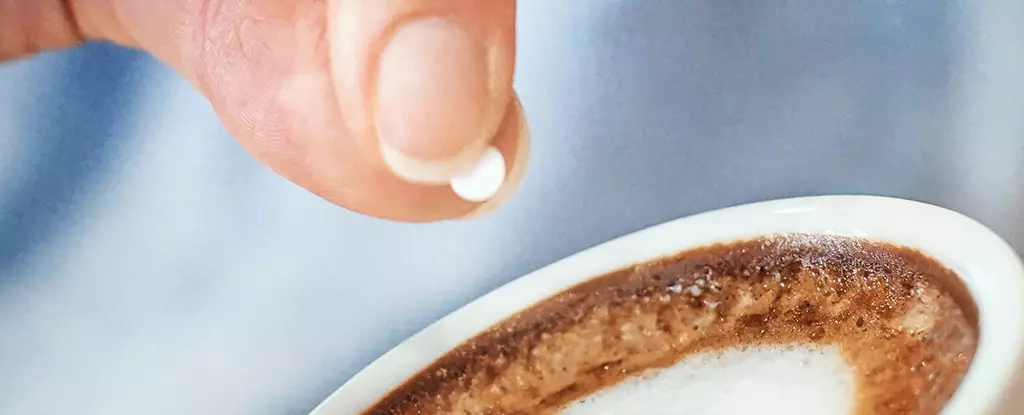Antibiotic resistance is not merely a looming threat; it is a burgeoning crisis that is already claiming lives globally, with estimates putting the annual death toll in the millions. The evolution of bacteria to withstand the most potent drugs is alarming and begs a reevaluation of our healthcare strategies. The conventional arsenal of antibiotics is rapidly being undermined, leaving practitioners with limited options for treating common infections. As we scramble to combat this ticking time bomb, any glimpse of hope—even from sources deemed unconventional—must not be dismissed lightly.
Artificial Sweeteners: Foil or Foe?
Artificial sweeteners have long been under scrutiny, often criticized for their potential negative health effects and questionable dietary benefits. Saccharin, one of the oldest and most widely used sweeteners, might be the most misunderstood of all. While the public discourse primarily revolves around concerns of metabolic effects and gut health, recent revelations are painting a more intriguing picture. Research from Brunel University in the UK has flipped the narrative, suggesting that saccharin may hold the key to disrupting harmful bacterial strains.
As we dive into the nuances of this study, it becomes clear that saccharin’s potential as a novel antimicrobial agent is worth our attention, despite the flurry of skepticism surrounding artificial sweeteners. Ronan McCarthy and his team have provided compelling evidence that saccharin can act as a formidable adversary against drug-resistant bacteria. By compromising bacterial cell structures and rendering them vulnerable to antibiotics, saccharin offers a dual benefit: it not only hampers the growth of these pathogens but also enhances the efficacy of existing antibiotics.
The Science Behind Saccharin’s Antimicrobial Properties
The mechanism revealed by the research is nothing short of fascinating. Saccharin appears to break the bacterial walls, causing them to rupture and thus permitting antibiotics to penetrate more effectively. This process is revolutionary, as it signifies a paradigm shift in our approach to antibiotic treatment—leveraging a commonly consumed substance to augment the limitations of our pharmaceutical weapons against superbugs.
Of particular note is the study’s exploration of the effectiveness of saccharin against notorious pathogens like Staphylococcus aureus and Escherichia coli. The findings suggest that while saccharin’s ability to combat these bacteria varies, it could offer a foundational strategy for modifying and enhancing antibiotic therapies with relatively minimal financial investment and time—an essential consideration given the slow advance of novel antibiotic development.
Wound Dressing Innovations: Saccharin to the Rescue
The research also ventured into another intriguing application: the creation of a surgical dressing infused with saccharin. In comparative tests on pig skin, this saccharin-enhanced dressing outperformed traditional silver-based dressings in reducing bacterial levels. This innovation underlines the potential for repurposing ordinary substances for extraordinary purposes, further reigniting the debate on the utility of artificial sweeteners.
However, despite the excitement surrounding these discoveries, one must tread carefully. The ramifications of indiscriminately adopting saccharin as a therapeutic ally require thorough investigation. The research community must acknowledge the multifaceted effects of artificial sweeteners on overall health.
Caution and Curiosity: A Balanced Perspective
While the burgeoning evidence of saccharin’s role in combating antibiotic resistance inspires optimism, it also invites skepticism. The health implications of long-term saccharin consumption are still shrouded in uncertainty. The differences among individual metabolic responses to artificial sweeteners complicate the narrative, demanding a nuanced examination before wholesale integration into treatment protocols.
Additionally, the urgency surrounding antibiotic resistance necessitates immediate and multifaceted strategies. Saccharin may sparkle as a piece of the puzzle, yet we must be prudent not to place all our hopes on a single solution, particularly one emerging from a domain, that until now, has been associated with a host of health concerns.
As we continue to explore the intersections of diet, health, and medicine, the narrative around saccharin and antibiotic resistance serves as a reminder that sometimes, the answers to our most pressing problems lie in unexpected places. Embracing a center-wing liberal stance, it is imperative that we ground our enthusiasm for potential solutions in rigorous scientific inquiry, ensuring that our approaches to public health remain well-rounded, evidence-based, and, most importantly, safe.



Leave a Reply